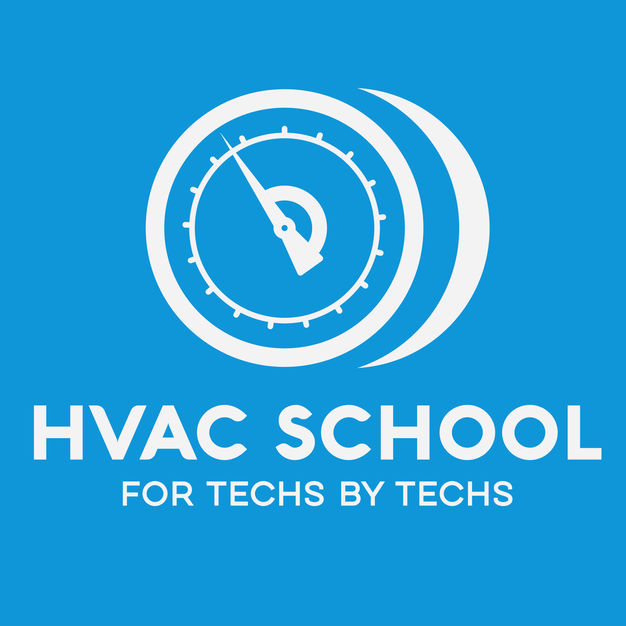
HVAC School - For Techs, By Techs
Bryan Orr
Real training for HVAC ( Heating, Ventilation, Air Conditioning and Refrigeration) Technicians. Including recorded tech training, interviews, diagnostics and general conversations about the trade.
- 30 minutes 14 secondsThe Buyout Epidemic - Manifesto
In this episode of the HVAC School Podcast, Bryan shares his perspective on the growing trend of private equity buyouts and investments in the trades, particularly in home services businesses. He addresses the "buyout epidemic" with a balanced view, acknowledging the significant financial opportunities these deals present while expressing concerns about their long-term impact on the industry and its people.
Bryan discusses how private equity firms are particularly attracted to home services businesses due to their potential for high margins, especially through implementing standardized processes, sales training, and often significant price increases. While he doesn't condemn the pursuit of profits or sales training, he emphasizes the importance of maintaining a balance between technical expertise and sales capabilities. He shares his own experience receiving numerous buyout offers for his company, Kalos Services, and explains why he consistently refuses them despite the potential for substantial financial gain.
The podcast delves into deeper questions about the purpose of business ownership and the true value of money. Bryan characterizes money as "liquid value" or "liquid effort" - a means to an end rather than an end itself. He challenges business owners to consider whether selling to private equity aligns with their core values and the long-term interests of their employees, customers, and the trades industry as a whole. He suggests that rather than selling to outside investors who aim to extract value, owners might be better served by implementing improvements themselves and maintaining control over their business's direction and culture.
Key topics covered in the podcast:
- The current wave of private equity investment in home services and trades businesses
- Different private equity strategies, including "roll-up" acquisitions
- The relationship between sales training, pricing, and profit margins in home services
- The importance of maintaining technical training alongside sales capabilities
- The concept of money as "liquid value" and its proper role in business
- The challenges of maintaining business values and culture under outside ownership
- The difference between ownership that understands the trades versus pure financial ownership
- The potential long-term consequences of concentrated corporate ownership in the trades
- The value of building sustainable, independently-owned businesses
- The importance of developing internal leadership rather than selling to outside investors
- The balance between profitability and maintaining quality service
- The risks of prioritizing short-term financial gains over long-term industry health
Have a question that you want us to answer on the podcast? Submit your questions at https://www.speakpipe.com/hvacschool.
Purchase your tickets or learn more about the 6th Annual HVACR Training Symposium at https://hvacrschool.com/symposium.
Subscribe to our podcast on your iPhone or Android. Subscribe to our YouTube channel. Check out our handy calculators here or on the HVAC School Mobile App for Apple and Android
30 January 2025, 12:00 pm - 9 minutes 27 secondsStanding Pilot - Short #228
In this short podcast episode, Bryan talks about the standing pilot gas systems and the ignition strategy in gas-fired appliances.
Standing pilots are very simple devices that are common in fuel logs, water heaters, and some pool heaters. These devices have a thermocouple or thermopile; in a thermocouple, two dissimilar metals are connected at one end, and there is an electron flow between the metals when one is heated up. A thermopile is a collection of thermocouples in series or parallel to generate more millivolt signals. (Both of these can be damaged if cleaned; don't mistake these for the flame rod! Flame rods can be cleaned with a delicate material.)
To use a standing pilot, turn the dial to the pilot mode and press it in, which allows gas to come through the pilot. Then, you can light the gas (with a lighter or spark mechanism) and keep the dial depressed until there is enough heat generated on top of the thermocouple or thermopile, which allows it to lock in and keep the pilot lit (and pass the entire safety circuit). Then, you turn the gas valve on and let the main burner take over.
If one safety is open, the entire circuit breaks to prevent unspent fuel from accumulating and causing a dangerous condition. One of the main challenges with standing pilots is that they are prone and very sensitive to corrosion due to the low voltage and current. Clean and tight connections can mitigate these risks.
Have a question that you want us to answer on the podcast? Submit your questions at https://www.speakpipe.com/hvacschool.
Purchase your tickets or learn more about the 6th Annual HVACR Training Symposium at https://hvacrschool.com/symposium.
Subscribe to our podcast on your iPhone or Android. Subscribe to our YouTube channel. Check out our handy calculators here or on the HVAC School Mobile App for Apple and Android
28 January 2025, 12:00 pm - 1 hour 7 minutesHistory of Gas Furnaces - Redux
Jim takes us all the way through the history of furnaces, from the Stone Age when he was a child to modern modulating condensing types.
The goal of a furnace is to move heat, so a furnace uses heat exchangers to facilitate heat transfer. Furnaces have primary and secondary air. The primary air goes through the burner, and the secondary air goes around the flame and is pulled in around the heat exchanger inlet. So, the flame's heat creates a draft that pulls air in.
Natural gas and oil (LP/propane) furnaces are common nowadays, but we initially burned wood and coal in furnaces. The first gas furnaces came into existence by modifying coal, not from the gas lines we see nowadays. Long ago, the flue gases were also exhausted to the basement; CO poisoning was less of a concern back then, as combustion was usually complete. Burning the building was a much more severe risk.
The first “gas crisis” in the 1970s forced us to focus on gas furnace efficiency. In that time, we developed spill switches and retrofit kits that converted furnaces over to spark ignition. In the 1980s, we came out with the draft-induced 80% furnaces we see nowadays. We also eliminated standing pilots and draft diverters. Even though the appliances became more efficient, we didn't actually burn the gas any more efficiently.
So, despite the technological advancements we've made over the years, we don't actually burn gas any more efficiently than we did in the 1930s. However, our modern furnace technology has eliminated standby losses, controlled ignition, and focused on the role of latent heat in combustion.
Jim also discusses:
- Flame color and types
- Draft hoods and diverters
- Products of complete combustion
- Excess air: a double-edged sword
- Natural ventilation
- Efficiency percentages
- Furnace testing and ratings
- Turbulators
- Modulation
Have a question that you want us to answer on the podcast? Submit your questions at https://www.speakpipe.com/hvacschool.
Purchase your tickets or learn more about the 6th Annual HVACR Training Symposium at https://hvacrschool.com/symposium.
Take the HVAC School Industry Pulse Survey by WorkHero at https://hvacrschool.com/workhero. Subscribe to our podcast on your iPhone or Android. Subscribe to our YouTube channel. Check out our handy calculators here or on the HVAC School Mobile App for Apple and Android
23 January 2025, 12:00 pm - 9 minutes 28 secondsHeat Exchangers and Temperature Rise - Short #227
In this short podcast episode, Bryan talks about heat exchangers and temperature rise in gas furnaces, especially 80% open-combustion gas furnaces.
Temperature rise is the difference between the return air temperature and supply air temperature; in cooling, we usually refer to this difference as a delta T or temperature split. The manufacturer sets a target range on the data plate; high-efficiency furnaces tend to have lower temperature rise targets than mid-efficiency or older furnaces. We want to heat the space and not waste heat on surfaces (like duct surfaces). For that reason, the goal is to stay in the middle of the temperature rise range or slightly on the lower side for peak efficiency, better heat transfer, proper airflow, proper venting, and protection of the heat exchanger.
In mid-efficiency furnaces, we don't want the temperature rise to be too low, as cooler gases can condense. High-efficiency condensing furnaces have a dedicated condensate system, but 80% furnaces do not. That condensation can corrode the heat exchanger, which makes it vulnerable to cracks. Cracked heat exchangers may also happen when the temperature rise is too high, and they are dangerous due to carbon monoxide (CO) leaks; check for abnormal flame movement and color. Lower-temperature air is also uncomfortable if the registers are in locations where blowing air on people is inevitable.
We can reduce the temperature rise by increasing the heating airflow, which can sometimes be done by re-tapping constant-torque and PSC motors or changing ECM settings. However, restrictive filters and ductwork may also cause that problem, and they need to be addressed.
Have a question that you want us to answer on the podcast? Submit your questions at https://www.speakpipe.com/hvacschool.
Purchase your tickets or learn more about the 6th Annual HVACR Training Symposium at https://hvacrschool.com/symposium.
Take the HVAC School Industry Pulse Survey by WorkHero at https://hvacrschool.com/industrypulse. Subscribe to our podcast on your iPhone or Android. Subscribe to our YouTube channel. Check out our handy calculators here or on the HVAC School Mobile App for Apple and Android
21 January 2025, 12:00 pm - 29 minutes 46 secondsManufacturer Responsibility - Manifesto
In this episode of the HVAC School podcast, Bryan shares his "Manufacturer Responsibility Manifesto," a document he wrote over two years ago but held back from publishing until now. The manifesto addresses growing concerns about the burden being placed on HVAC contractors, particularly smaller businesses, due to manufacturing quality issues and warranty policies.
The industry has undergone significant changes since the 1990s, including stricter refrigerant regulations and an increase in parts failures. While manufacturers offer longer warranty periods now than in the past (often 10+ years compared to 3-5 years previously), these warranties often don't cover crucial expenses like refrigerant, brazing rods, fittings, and labor costs. This leaves contractors in a difficult position of either absorbing these costs or charging customers and potentially damaging relationships.
The manifesto calls for manufacturers to take greater responsibility for their products, particularly during the warranty period. Bryan proposes that manufacturers should reimburse contractors for total costs (including labor) for manufacturer-caused repairs within the first year, and cover parts and ancillary materials (including refrigerant) during the subsequent warranty period. He argues that this would incentivize manufacturers to improve product quality and reduce environmental impact, as they would bear more of the financial responsibility for failures and refrigerant losses.
Key topics covered in the podcast:
- Evolution of HVAC industry regulations since the 1990s
- Increase in parts failures compared to previous decades
- Impact of global supply chain issues on part quality and availability
- Environmental concerns regarding refrigerant leaks and equipment waste
- Warranty coverage limitations and their impact on contractors
- Disparity between domestic and overseas manufacturing quality
- Financial burden on small contracting businesses
- Need for clear standards to differentiate manufacturer vs contractor-caused failures
- Proposal for comprehensive warranty coverage including ancillary materials
- Environmental responsibility and accountability in manufacturing
- Role of manufacturers in industry sustainability
- Impact of private equity and large companies on the industry
- Need for improved quality control in manufacturing
- Relationship between warranty policies and contractor-customer trust
- Call for industry-wide collaboration to implement changes
Have a question that you want us to answer on the podcast? Submit your questions at https://www.speakpipe.com/hvacschool.
Purchase your tickets or learn more about the 6th Annual HVACR Training Symposium at https://hvacrschool.com/symposium.
Take the HVAC School Industry Pulse Survey by WorkHero at https://hvacrschool.com/industrypulse.
Subscribe to our podcast on your iPhone or Android.
Subscribe to our YouTube channel.
Check out our handy calculators here or on the HVAC School Mobile App for Apple and Android
16 January 2025, 12:00 pm - 14 minutes 35 secondsQ&A - Tips for Moving to HVAC Sales - Short #226
In this short Q&A podcast episode, Bryan answers a listener-submitted question and gives some of his tips for moving to HVAC sales from field technician/installer roles. The world of sales has a different pay structure, which makes it an appealing option to many technicians.
Salespeople need to be able to have money conversations with confidence and not be afraid to talk about pricing. You can practice these conversations with friends or fellow technicians, including answering questions and responding to objections.
Sales confidence is another key to success in sales. Many successful sales techs go into sales with the assumption that the client wants to work with them and aren't timid because they're confident they'll make the sale. Great salespeople also seek out feedback to learn and grow from.
Many great salespeople in the HVAC industry also benefit from learning about load calculations, equipment selection, and duct design, particularly via the ACCA manuals and software like Wrightsoft and Kwik Model 3D. The HVAC Grapevine, NCI, and TEC all have great educational resources about building science. Deploying test instruments, including blower doors, duct blasters, and thermal imaging cameras, also gives you vital information about the structure and shows clients that you're going above and beyond for their comfort; you're delivering quality and doing so with integrity.
Communication skills are a crucial part of sales, and the best thing you can do to start honing your communication skills is to ask good questions and listen for valuable answers. Empathy is also important in sales, and it's most effective when you can understand your client's priorities.
Have a question that you want us to answer on the podcast? Submit your questions at https://www.speakpipe.com/hvacschool.
Purchase your tickets or learn more about the 6th Annual HVACR Training Symposium at https://hvacrschool.com/symposium.
Take the HVAC School Industry Pulse Survey by WorkHero at https://hvacrschool.com/industrypulse. Subscribe to our podcast on your iPhone or Android. Subscribe to our YouTube channel. Check out our handy calculators here or on the HVAC School Mobile App for Apple and Android
14 January 2025, 12:00 pm - 34 minutes 7 secondsWhite Shirt Techs - Manifesto
This unique podcast episode is a commentary on the phenomenon of "white shirt techs" in the HVAC industry - a term that refers to technicians who focus heavily on sales and maintaining a pristine appearance rather than technical expertise. While there's nothing inherently wrong with having good sales skills or maintaining a professional appearance, there needs to be a balance with actual technical competency. The episode serves as part of a manifesto series heading into 2025, addressing important industry trends and concerns.
There is a delicate balance between sales and service in the HVAC industry, particularly in residential services. Some companies and technicians may prioritize metrics like average ticket price and five-star reviews over providing genuine solutions to customers' problems. While it's important to discuss money and options with clients, we shouldn't resort to fear tactics or make promises that products can't fulfill, particularly in areas like indoor air quality solutions and UV lights.
The podcast raises important questions about professional identity and integrity in the HVAC field. Technicians should occasionally step back and think about whether they've lost their passion for actually fixing equipment and solving technical problems in favor of focusing solely on sales. He argues that the best residential technicians maintain their interest in the mechanical aspects of the work, even as they develop their customer service and sales skills. The episode concludes with a call for technicians and companies to invest more time in technical training and to maintain their commitment to solving real problems rather than just selling solutions.
Key Topics Covered:
- Definition and characteristics of "white shirt technicians"
- The balance between sales skills and technical expertise
- Problems with fear-based selling and overpromising in HVAC
- The importance of third-party verification for product claims
- Discussion of specific products like surge protectors and UV lights
- The role of maintenance agreements and their value proposition
- The future sustainability of sales-first business models
- The importance of maintaining passion for the technical aspects of HVAC
- Professional appearance versus technical competency
- The relationship between pricing and actual value delivered
- The role of customer reviews and their potential manipulation
- Training priorities: technical skills versus sales techniques
Have a question that you want us to answer on the podcast? Submit your questions at https://www.speakpipe.com/hvacschool.
Purchase your tickets or learn more about the 6th Annual HVACR Training Symposium at https://hvacrschool.com/symposium. Subscribe to our podcast on your iPhone or Android. Subscribe to our YouTube channel. Check out our handy calculators here or on the HVAC School Mobile App for Apple and Android
9 January 2025, 12:00 pm - 9 minutes 7 secondsQ&A - Double Flares - Short #225
In this short podcast episode, Bryan answers a listener-submitted question about double flares and their application in the HVAC/R industry.
Flare connections are common in certain types of equipment, and they connect the copper to the appliance. As a result, when we make a flare, our goal is to make it leak-free. A regular flare requires you to cut the copper, clean it, put the flare nut on, and make the flare with a flaring block (or a flaring tool). You can also put a little bit of oil on the flare cone to prevent galling. Modern power flaring tools are common nowadays, especially in markets where we install a lot of mini-splits. We also use torque wrenches to tighten the flare connection according to the manufacturer's specs.
In mission-critical applications where we have toxic or flammable refrigerants under high pressure, we especially want leak-free connections. Double flares make more sense in these scenarios for extra security (though we may use different connection types). A double flare requires you to use a double-flare die that flares over the edge, though those double-flare dies are more common in older flaring kits and may not exist for power tools or spin tools.
Double flares are usually less practical than other alternatives that exist on the market. For example, some manufacturers make flare gaskets to reduce the likelihood of leaks, and these are functionally similar to a double flare.
Have a question that you want us to answer on the podcast? Submit your questions at https://www.speakpipe.com/hvacschool.
Purchase your tickets or learn more about the 6th Annual HVACR Training Symposium at https://hvacrschool.com/symposium. Subscribe to our podcast on your iPhone or Android. Subscribe to our YouTube channel. Check out our handy calculators here or on the HVAC School Mobile App for Apple and Android
7 January 2025, 12:00 pm - 29 minutesCan You Coat Fiberglass?
In this episode of the HVAC School Podcast, Bryan interviews Zach about duct coatings and their applications in HVAC systems, particularly focusing on the Hardcast RE500 product. The discussion delves into the importance of proper duct coating applications and their benefits for both contractors and customers. Zach, who has extensive experience in duct cleaning and restoration, shares his expertise on the proper application and benefits of duct coating systems.
The conversation explores how modern ductboard comes with a clear coat that offers some protection, but additional coating can provide significant benefits, especially in high-velocity areas near equipment. They discuss how coating creates a smoother, more cleanable surface that's almost comparable to sheet metal in terms of friction resistance. Zach emphasizes that coating should only be applied after proper cleaning, as it's not meant to cover up dirty ducts but rather to protect and improve cleaned surfaces.
A significant portion of the discussion centers around the practical applications for HVAC contractors, particularly during equipment changeouts. Bryan proposes the idea of coating the first 5-10 feet of ductwork near equipment during changeouts, as these areas experience the highest velocity and are most susceptible to fiber shedding and moisture issues. The conversation also addresses the cost-effectiveness of coating versus replacement, with the coating being approximately one-fourth to one-fifth the cost of replacement.
Key Topics Covered:
- Hardcast RE500 duct coating product and its applications
- Benefits of duct coating, including reduced friction, fiber containment, and improved cleanability
- The importance of proper surface preparation before coating application
- Comparison between coated ductboard and sheet metal surfaces
- Drying and curing times for duct coatings
- The relationship between duct cleaning and coating services
- Cost comparison between coating and replacement
- Special considerations for coastal environments
- NADCA certification and training requirements
- The importance of proper application techniques and professional certification
- Health and safety considerations regarding fiberglass ductwork
- The role of duct coating in preventative maintenance
- Application methods, including airless sprayer and brush/bucket techniques
- Quality control and industry standards for duct coating
Learn more about NADCA at https://nadca.com/.
Have a question that you want us to answer on the podcast? Submit your questions at https://www.speakpipe.com/hvacschool.
Purchase your tickets or learn more about the 6th Annual HVACR Training Symposium at https://hvacrschool.com/symposium. Subscribe to our podcast on your iPhone or Android. Subscribe to our YouTube channel. Check out our handy calculators here or on the HVAC School Mobile App for Apple and Android
2 January 2025, 12:00 pm - 22 minutes 22 secondsQ&A - Metacognition and More - Short #224
In this short Q&A podcast episode, Bryan answers a listener-submitted question about metacognition and more about critical thinking, reflective analysis, and challenging biases.
Metacognition is the ability to think about thinking; it's about breaking things down, noticing your own thoughts, and understanding the "why" behind their thoughts. Metacognition is beneficial when applied to the "wide" aspects of the "wide-narrow-wide" mindset; it helps with broad analysis and is less useful during the narrow phase when you want a flow state.
Unpacking our biases is useful, but it's most important in positions of power. Biases and assumptions have the most widespread effect when they're leveraged on others by authority figures, but they show up in any position of power (or lack thereof). Many of these are baked into us as mental shortcuts called heuristics, which are the same things that tell us not to touch stoves for survival; they're ingrained, but we have to be able to challenge those and unpack the reasons when it comes to assumptions about other people. However, this activity is time-consuming and not best used in situations where immediate action is needed.
Humans have a strong proclivity for pattern recognition for survival reasons. However, one of the downsides of strong pattern recognition is the risk of associating correlation and causation without taking the proper investigative steps to confirm the relationship between things. The scientific method exists to test a hypothesis and explore the relationship between things in our world. Learning and being open to complex relationships are components of a great mindset to apply to HVAC work as well, and humility and curiosity are at the forefront.
Franco, Zeno E., Kathy Blau, and Philip G. Zimbardo. "Heroism: A conceptual analysis and differentiation between heroic action and altruism." Review of general psychology 15.2 (2011): 99-113. https://doi.org/10.1037/a0022672
Have a question that you want us to answer on the podcast? Submit your questions at https://www.speakpipe.com/hvacschool.
Purchase your tickets or learn more about the 6th Annual HVACR Training Symposium at https://hvacrschool.com/symposium. Subscribe to our podcast on your iPhone or Android. Subscribe to our YouTube channel. Check out our handy calculators here or on the HVAC School Mobile App for Apple and Android.
31 December 2024, 12:00 pm - 44 minutes 34 secondsRedux - The Lost Art of Steam Heating w/ Dan Holohan
In today's podcast, Bryan talks with legendary Hydronics author and trainer Dan Holohan about the history of steam heating and some practical applications of old ideas. Recently, Dan has been working on more novels, having published two of them over the past few months.
Steam heating is a “lost art” nowadays; it has become increasingly uncommon and has been disappearing since the Vietnam War. Many people who understood steam heating either retired or died after the Vietnam War. Many elements of steam heating are difficult to understand or surprising. (For example, steam pressure has a surprising relationship with velocity: low-pressure steam moves through piping much more quickly than high-pressure steam.) So, Dan Holohan is on a mission to revive that knowledge and teach the newer generations about the lost art.
There are many older steam heating systems still operating today, especially in the older large buildings in New York. Dan learned a lot about steam heating when working on these old systems and optimizing them. Most of the time, he optimized those systems by removing unnecessary accessories, not by adding components like steam traps.
Many old boilers used coal as a heat source. Nowadays, many old boilers have been fitted with conversion oil burners with thermostats, but they are still piped for coal. Some systems now have multiple risers or massive vents on the main riser to prevent the thermostats from getting too hot too early and satisfying the thermostat too early. We call that master venting, which reduces pressure and allows steam to move very quickly and efficiently.
Dan also discusses:
- The 2-PSI standard
- Transportation metaphors for BTUs in steam
- Harmful renovations for old boilers
- Replacement vs. restoration mindsets
- Gaps in steam boiler education
- Monopolizing the market if you HAVE the education
- Boiler piping and venting
- Two-pipe vs one-pipe steam
Find out more about Dan and hydronic heating at HeatingHelp.com.
Have a question that you want us to answer on the podcast? Submit your questions at https://www.speakpipe.com/hvacschool.
Purchase your tickets or learn more about the 6th Annual HVACR Training Symposium at https://hvacrschool.com/symposium. Subscribe to our podcast on your iPhone or Android. Subscribe to our YouTube channel. Check out our handy calculators here or on the HVAC School Mobile App for Apple and Android.
26 December 2024, 12:00 pm - More Episodes? Get the App
Your feedback is valuable to us. Should you encounter any bugs, glitches, lack of functionality or other problems, please email us on [email protected] or join Moon.FM Telegram Group where you can talk directly to the dev team who are happy to answer any queries.
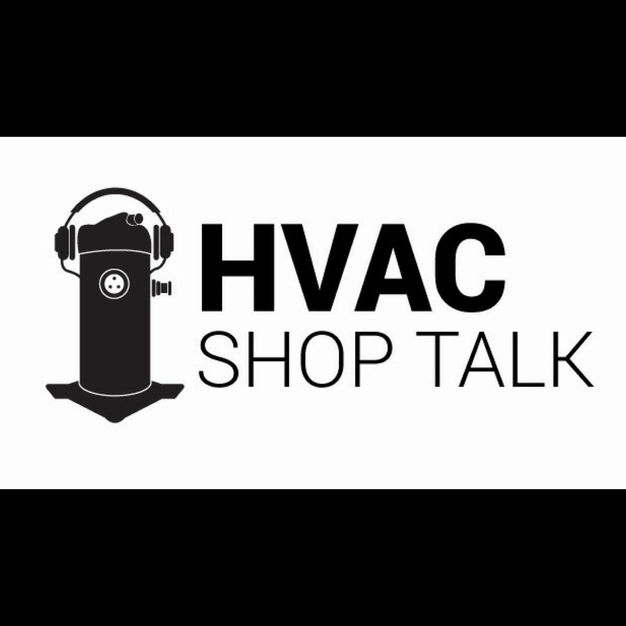 HVAC Shop Talk
HVAC Shop Talk
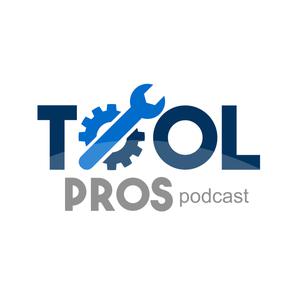 Tool Pros Podcast
Tool Pros Podcast
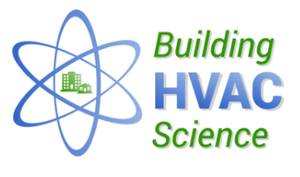 Building HVAC Science -Comfort, health & energy efficiency
Building HVAC Science -Comfort, health & energy efficiency
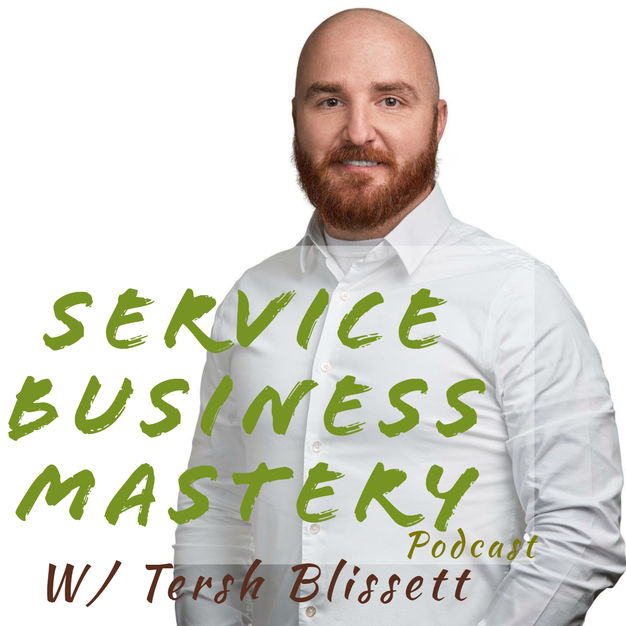 Service Business Mastery - Business Tips and Strategies for the Service Industry
Service Business Mastery - Business Tips and Strategies for the Service Industry
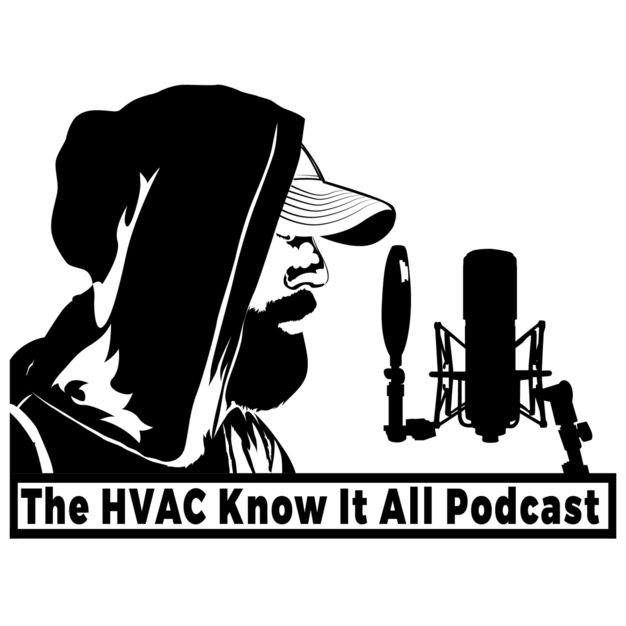 HVAC Know It All Podcast
HVAC Know It All Podcast
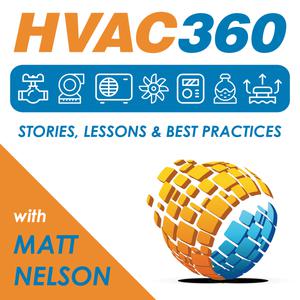 HVAC 360
HVAC 360